The best bike repair stands – often referred to as workstands – are an essential item when you're working on your bike or carrying out repairs.
A bike repair stand lifts the bike off the ground, holds it at a comfortable working height and keeps it stable and secure so you can focus on the task you're doing, rather than having to use one hand to hold the bike still.
A bike repair stand is the centrepiece of any home workshop. Once you've used one, you'll wonder how you ever managed to even lube a chain without it.
There are a few key factors that will decide the style of repair stand that’s best for you. Budget, of course, is a key thing to consider – a perfectly usable workstand can be had for as little as £50 / $65 / €60, but they start getting good around the £100 / $125 / €110 mark. Beyond that, the sky's the limit.
Below the best list is our buyer’s guide to workstands. It will help you with what to look for in a repair stand, as well as run you through the different types.
Editor's note: this list was updated on 3 January 2025.
The best bike repair stands 2025, as rated by our expert testers
Park Tool PCS-10.3 Deluxe Home Mechanic Repair Stand
SQUIRREL_TEXT_13077140
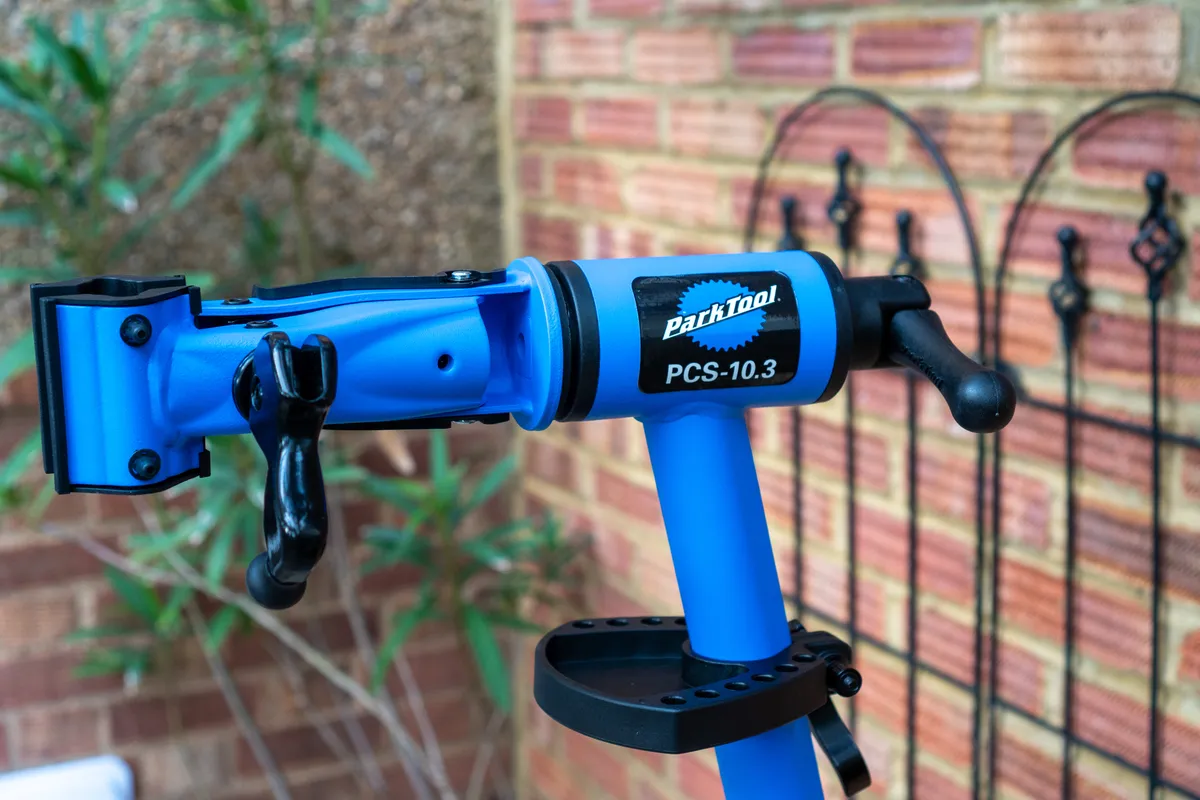
- £369.99 / $335.99 as tested
- Pros: A benchmark clamp; sturdy base; accessory compatibility
- Cons: Doesn't stand upright when folded
The PCS-10.3 is one of the best repair stands we have tested. Its best feature is its cam-actuated, Micro-Adjustable 2846 clamp, which can fit a variety of tube shapes and sizes, and offers plenty of adjustment.
The base's spring button and the stand's quick-release clamp make unfolding intuitive and the stand folds away to a convenient size. It's even compatible with a range of accessories to make wrenching easier and comes with a small 2843A Work Tray.
Specs
Clamp height max: 150cm | Clamp height min: 104cm | Folding: Yes
SQUIRREL_13077140
Feedback Pro Mechanic HD Bike Repair Stand
SQUIRREL_TEXT_13077145
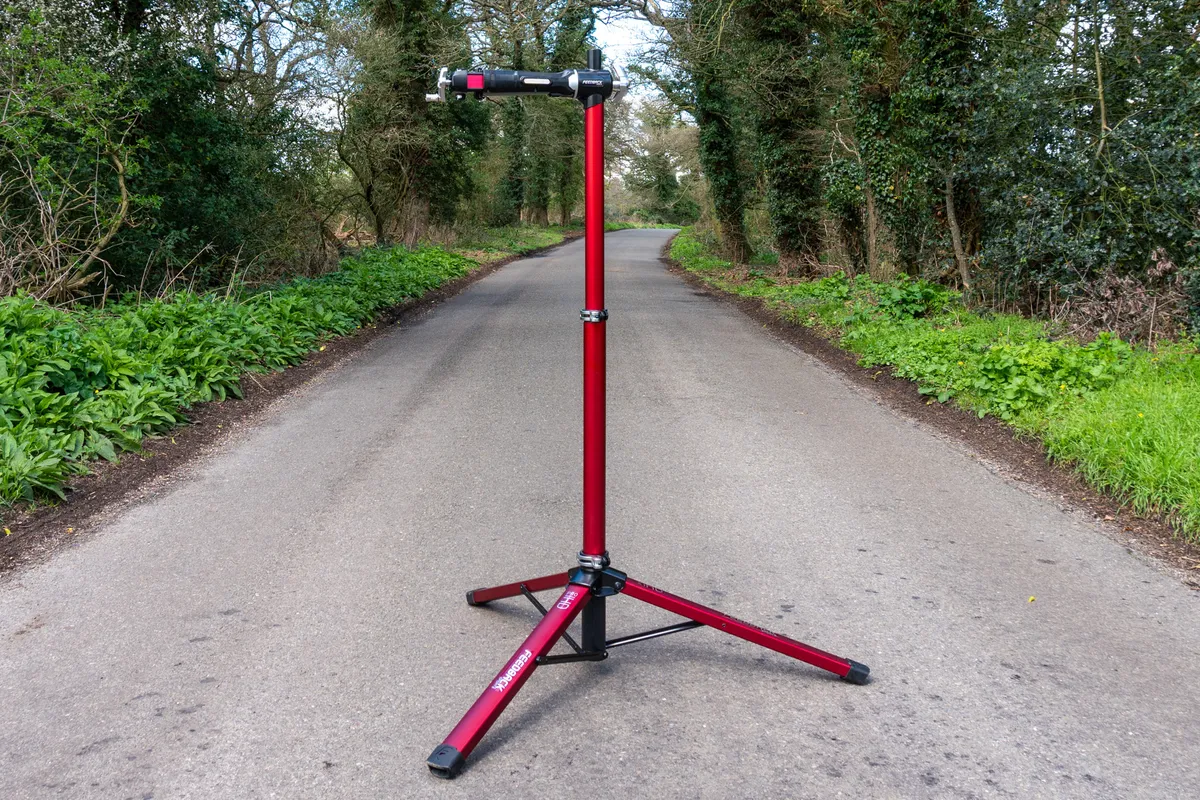
- £499 / $495 / €525 / AU$599 as tested
- Pros: Wide and sturdy base; easy to fold and store
- Cons: Clamp design isn't perfect
Feedback's Pro Mechanic HD stand is its top-flight offering with a tube-mounted clamp.
In testing, the stand proved to be mostly excellent. It's one of the easiest we've used to fold and unfold, it's light at 7.53kg and is compatible with a range of accessories to make your wrenching easier.
The only aspect holding this stand back from full marks is its clamp. While Feedback has vastly improved the clamp over older designs, the fact that it clamps the seatpost at the sides holds it back, as does the fact it isn't friendly with aero seatposts.
Specs
Clamp height max: 168cm | Clamp height min: 106cm | Folding: Yes
SQUIRREL_13077145
Park Tool PCS-9.3
SQUIRREL_TEXT_13077076

- £285 / $220 / €275 as tested
- Pros: Great stand stability; folds neatly
- Cons: Simple turn-key clamp adjuster
The Park PCS-9.3 is an entry-level offering with a stable and sturdy base.
The clamp offers some adjustment and can accommodate a large range of tube shapes, but it isn't as refined as some of the brand’s higher-priced offerings due to the lack of a cam-actuator.
The PCS-9.3 also doesn’t use quick-release in its folding arrangement, instead relying on hex bolts, so it can take longer to set up.
Specs
Clamp height max: 145cm | Clamp height min: 99cm | Folding: Yes
SQUIRREL_13077076
Lifeline Home Mechanic repair stand
SQUIRREL_TEXT_13111258
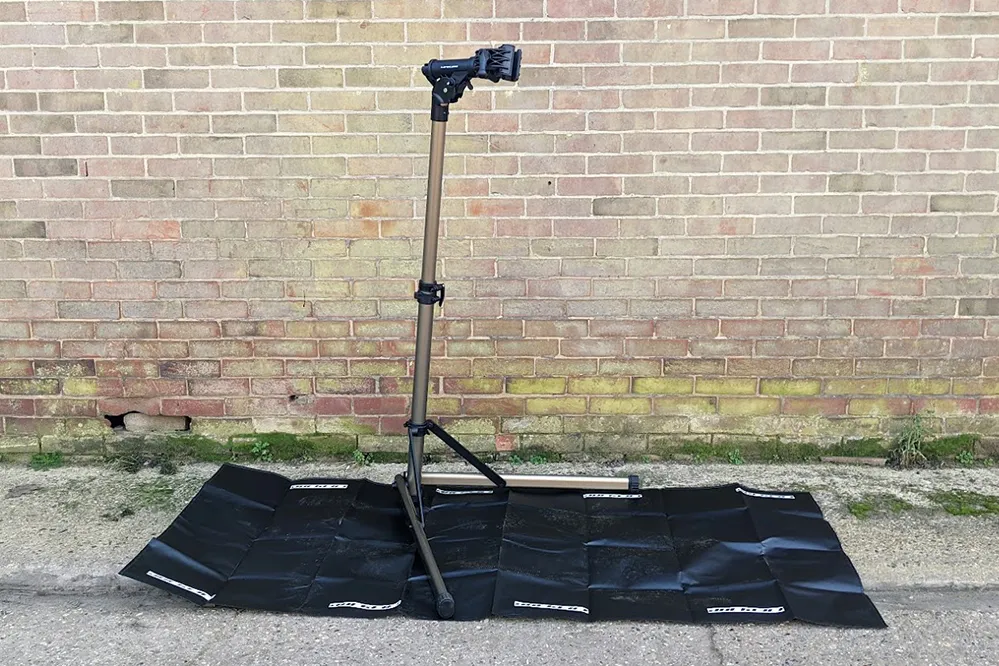
- £90 / $177 / €106 / AU$195 as tested
- Pros: A simple yet reliable design; sturdy stature
- Cons: Bulky when folded
Lifeline’s unassuming stand is a hit and proves a reliable budget-oriented purchase with its adjustable clamp and simple yet effective wide supporting legs.
It even comes with a waterproof mat to place underneath to catch any spillages or dirt.
Specs
Clamp height max: 154cm | Clamp height min: 102cm | Folding: Yes
SQUIRREL_13111258
Also consider…
These bike repair stands scored fewer than four out of five stars in our test, but they are still worth considering.
Pedro's Folding Repair Stand
SQUIRREL_TEXT_13077155
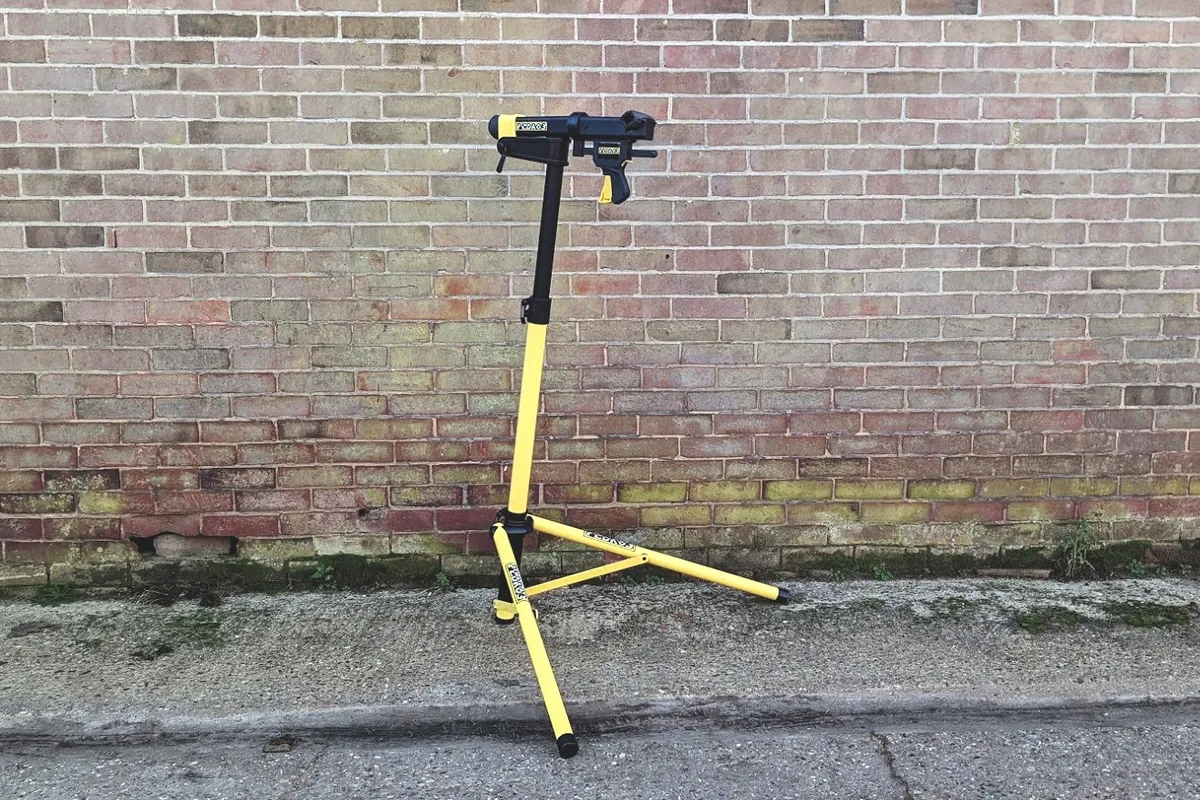
- £299.99 / $300 as tested
- Pros: Sturdy and easy to assemble; clever clamp
- Cons: Best suited to smaller-diameter tubing; pricey
The Pedro’s Folding Repair Stand collapses down neatly when not in use and is easy to assemble.
It’s easily adjusted for use at different angles and, once you get the hang of the trigger system for clamping bikes into the stand, it’s secure.
However, the narrow jaws mean it’s best suited to smaller-diameter tubing, such as seatposts. Both the price and weight (9kg) are also high.
Specs
Clamp height max: 185cm | Clamp height min: 106cm | Folding: Yes
SQUIRREL_13077155
Topeak Prepstand Max
SQUIRREL_TEXT_13093352

- £130 / €150 as tested
- Pros: Folds up neatly; offers 360-degree access
- Cons: Won't hold individual components for maintenance; only one option to clamp the bike
The Topeak Prepstand Max is a bottom-bracket mounted option, where the bike rests on the top of the stand in a V-shaped jaw.
It may not suit taller mechanics because its maximum height is 108cm, nor will it be the most effective option for an externally cabled bike, but it takes up little room when fully folded and is a lightweight option.
Specs
Clamp height max: 108cm | Clamp height min: 80cm | Folding: Yes
SQUIRREL_13093352
Unior 1693A Bike Gator

- £276 / €369 as tested (specific model not available in USA or Australia)
- Pros: Quality construction; single-action clamp
- Cons: Expensive; best for round seatposts
The Unior 1693A Bike Gator represents a more premium option and the finish is excellent, as is the quality of the sliding and telescoping components.
It even comes with a removable tool tray. However, although the single-action clamp works well, it doesn’t really suit anything other than round seatposts.
Clamp height max: 155cm | Clamp height min: 98cm | Folding: Yes
How we test repair stands
We test repair stands in our workshop to see how they perform in their usual habitats with input from our in-house workshop mechanic.
If it is a collapsable stand, we test its ability outside, often in trail-centre or cycle-route car parks.
Our testers have seen their fair share of mechanicals, and with each test bike requiring some level of construction, they know their way around a repair stand well.
Ultimately, our repair stand reviews are based on the following criteria:
- Stability – is the stand stable on a variety of surfaces?
- Ease of mounting – can you easily secure your bike to the stand?
- Packability – if the stand collapses, how easy is it to set up?
- Value for money – how does the stand compare to others in the market? Are you getting a good deal?
Why you can trust BikeRadar
BikeRadar has been an authority on bikes and cycling tech since its inception in 2007, delivering the world’s best riding advice.
We have experts testing all types of bikes, parts, clothing and accessories, from road, mountain and gravel bikes to commuting, bikepacking and electric bikes.
Our reviews are always editorially independent – with no exceptions. Our reviewers comprehensively test all products in the real world, always reflecting on performance, value and the wider market when delivering their verdicts and review ratings.
We have more than 15,000 product reviews available at your fingertips, as well as expert buying, maintenance, training, skills, health and fitness advice.
Our annual Bike of the Year test is an industry benchmark and the BikeRadar team consists of some of the most experienced riders and testers in the business.
What type of repair stand is best for you?
There are two main types of repair stand – tube clamping and axle/bottom-bracket mounted. What bike you have may be the deciding factor on which is best.
Tube-clamping repair stands
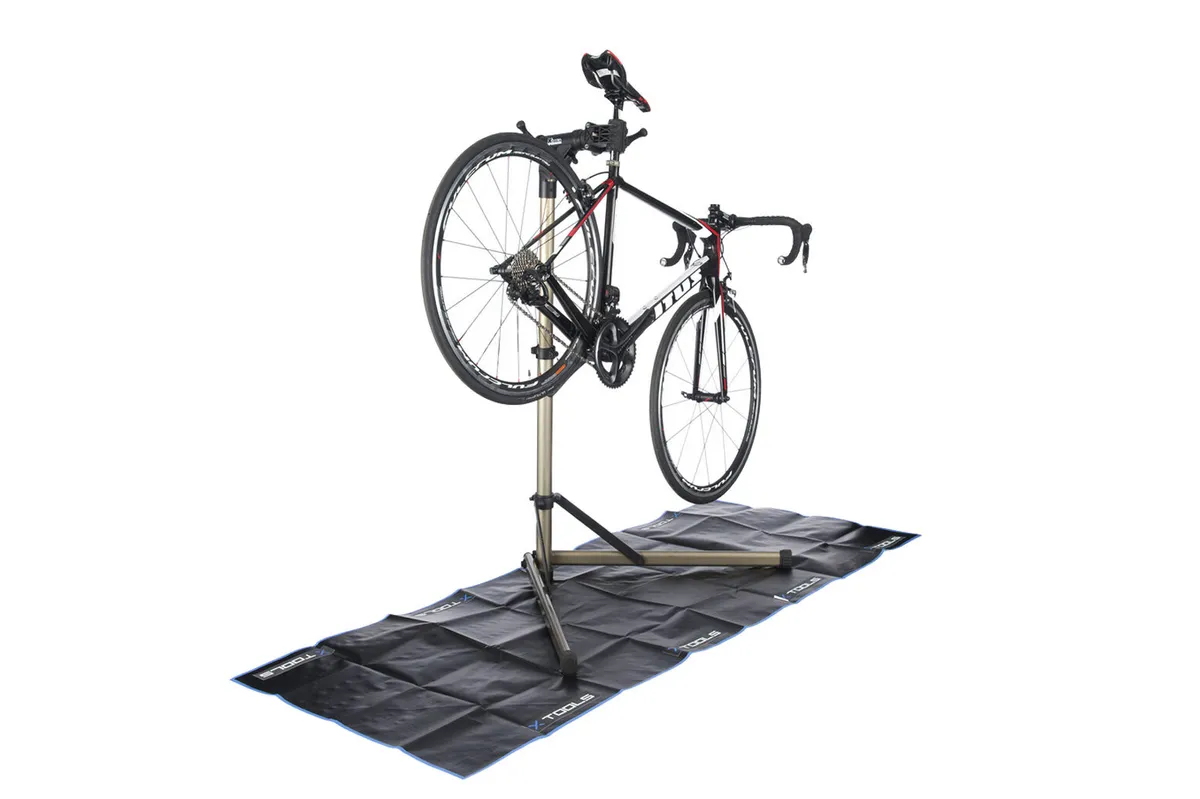
A tube-clamping repair stand is the most common style. You simply lift the bike and fit it into the jaws of the clamp by its seatpost. Many offer height and angle adjustment.
They are generally quick to grab the bike, but are not ideal for all bike types.
You should always clamp the bike by its seatpost. Clamping onto frame tubes, especially on carbon frames, can damage them.
To avoid marking the seatpost, you can wrap a rag around the post so the jaws of the clamp aren’t in direct contact with it. It's especially important to do this if clamping onto a dropper seatpost to avoid damaging the telescoping portion.
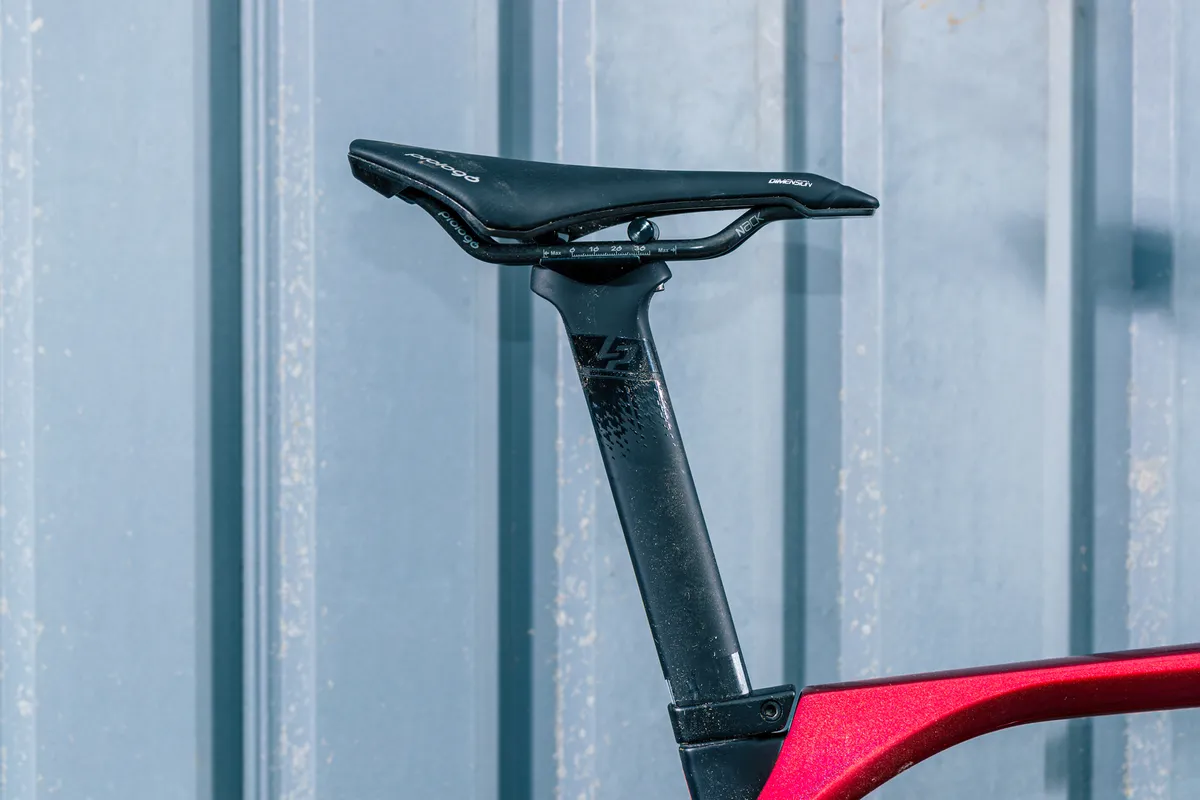
Aero seatposts can make it hard to use a tube-clamping repair stand. You may find that there isn’t sufficient clearance to clamp the seatpost on some frames.
With some aero frames that have a proprietary seatpost, the stand might not offer the right surface to securely clamp to it at all. You may want to invest in a different style of repair stand if you have a frame with this design.
Generally speaking though, if you have anything other than a lightweight or aero road bike, a tube-clamp style stand is the best choice. It allows you to do all your work with both wheels mounted, and thru-axles and strangely placed brakes won’t be a cause for concern.
Axle/bottom-bracket mount repair stands
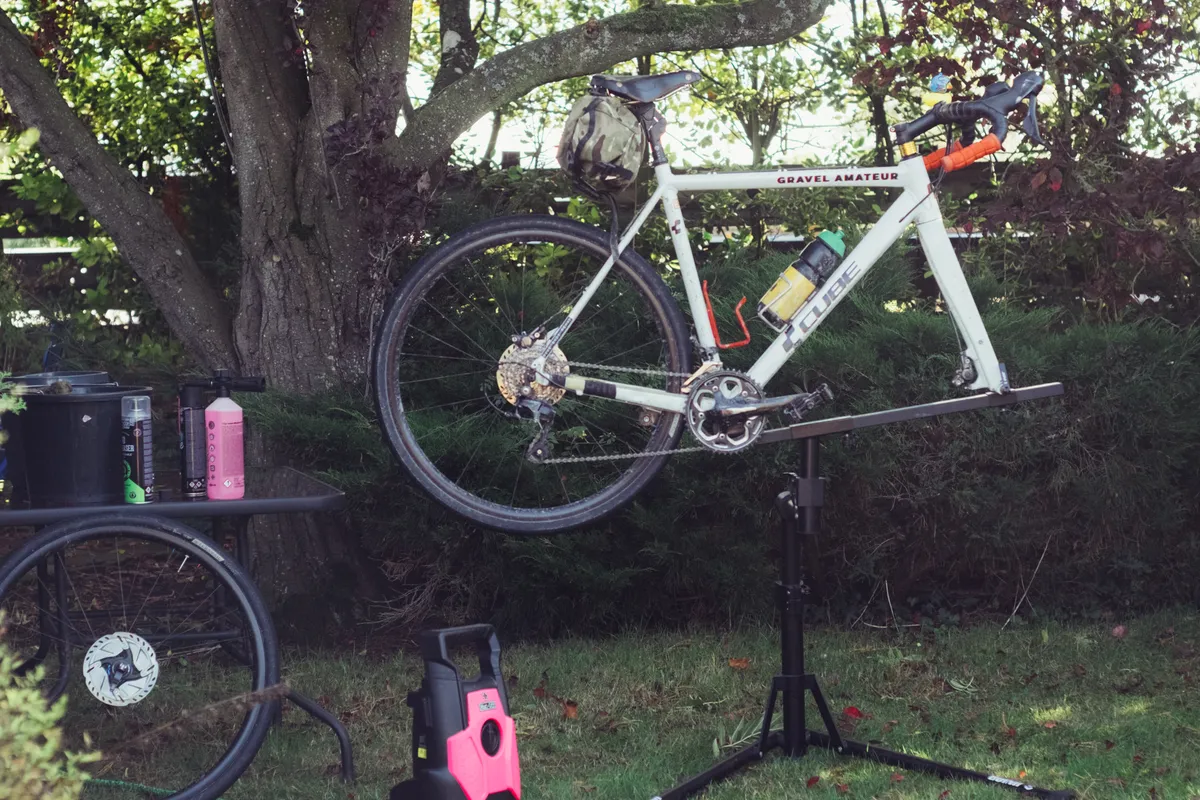
Go to a WorldTour race and all you'll see is this style of stand.
It doesn't involve any clamping on frame tubes, and enables the mechanic to easily spin the bike so they can reach all areas and sides of the bike without having to move themselves.
This style is more compact too, so the stand takes up less room whether in use or not.
Exerting a lot of force on tight bolts and stuck bottom brackets is best done in this style of stand.
There is a sacrifice to be made in return for the benefits that this sort of stand offers, and that's that one wheel must be removed to use it.
Silca Hirobel
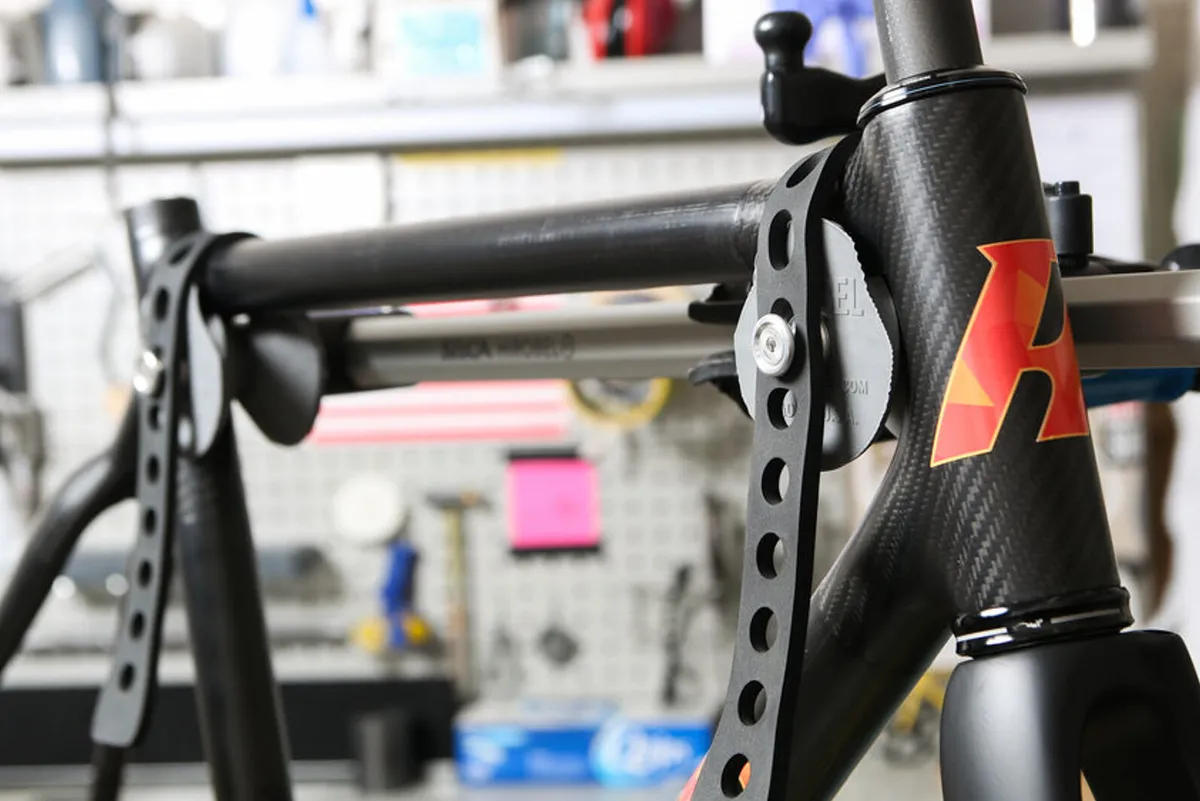
The Silca Hirobel represents an alternative mounting option and is especially useful for carbon frames.
It acts as an attachment to a tube-clamping repair stand and features two foam inserts with adjusters for the top tube to rest in. With this design, the tubes aren’t being clamped directly. This eliminates the risk of crushing the tubes if you cannot mount the frame in the stand by the seatpost.
Portable vs permanent
Portable repair stand

The idea of a portable repair stand is attractive to anyone without a permanent workspace.
Being able to easily pack away the stand when you’ve finished using it, or take the stand to events, rides or even a friend's house will be important for many people.
Not all portable repair stands are created equal though, and some are certainly easier to stow away than others. It’s a trade-off and one that’s best decided by how often you’ll be folding up your stand.
Permanent repair stands
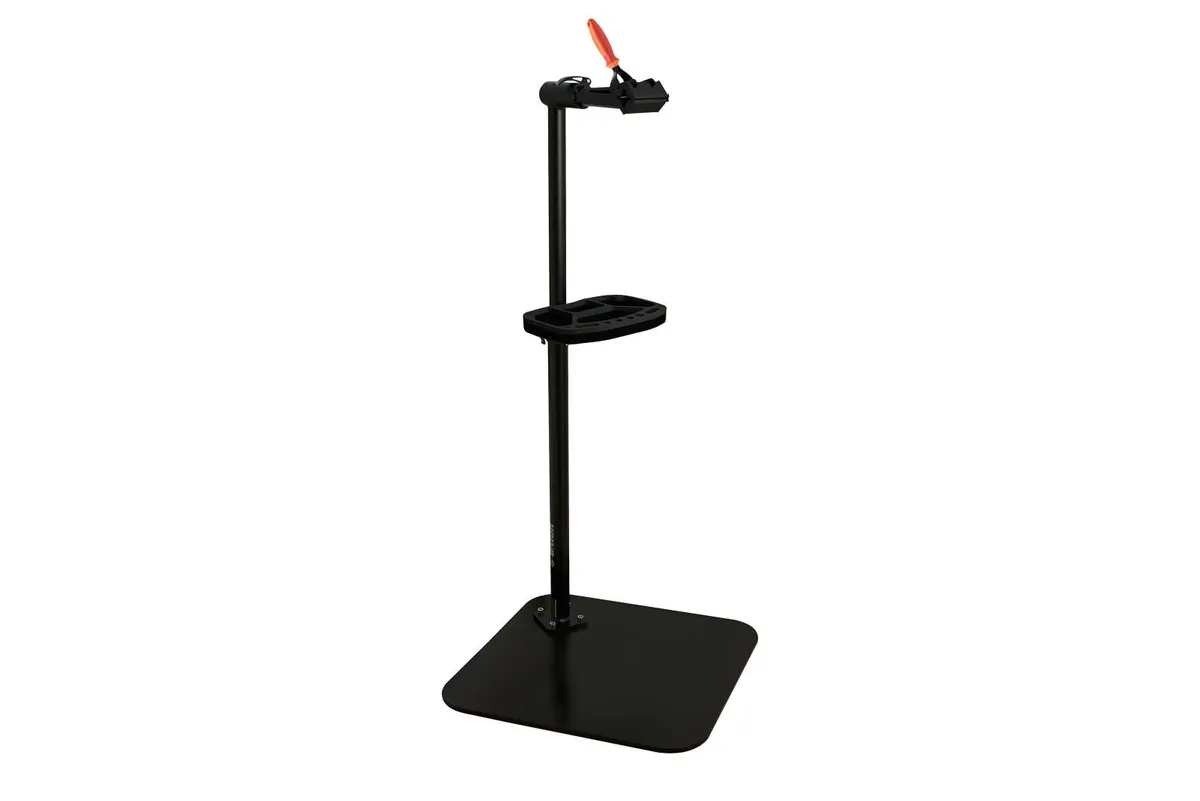
There's no denying the satisfaction of owning a permanent mounted stand that is more solid than the bike it's holding, but a permanent repair stand is really only for committed home mechanics.
Its solidity means you'll have a much better chance of loosening tight pedals or rusted bottom brackets while mounted, but it's impractical if you don't have a permanent work space. Most permanent options bolt to the floor, wall or bench, but you can also consider a big steel plate that enables you to move the repair stand, at least a little.
The DIY option
We've covered what is available on the market, but if you're handy with tools and are looking for a project beyond the bike repair itself, then making a DIY stand is totally possible.
Some people we know have made stands from wood, others from PVC pipe.
Whatever you choose, the common downfall is the clamping mechanism and the overall cost efficiency compared to pre-made options.
The only truly good DIY stands we've used have been made from metal, still feature aftermarket bike-specific clamp heads and generally cost more than the pre-made version – but we’re all for ingenuity, so share any photos of your homemade repair stands below.
What to look for in a bike repair stand
Sure, the $3,395 electric-motor driven Park Tool PRS-33 and the $3,050 EVT EZ-Lift stands are pretty awesome, but then so is a personal butler or a Lamborghini.
Just like when buying a bike, you should spend what you're comfortable with on a repair stand.
Spending more will give you a better-quality stand that can handle more advanced repairs and will have more features. These go a long way to making the repair work more comfortable, but make sure you're only paying for what you need.
The following are key features to look out for in tube-clamp style stands:
- Angle adjustment: the ability to change the angle of the clamp is crucial when doing more complex repairs such as bleeding hydraulic brakes. The ideal is a stand that's adjustable, easy to swivel and locks down rigid when wanted – it's a pain when you're trying to do something precise and the whole bike tilts away. Pay attention to how easy and how smooth the actuation of the tilting feature is because this can often be a downfall on some stands.
- Height adjustment: all but the very cheapest repair stands will offer height adjustment, but some may not offer enough. If you're tall, look for a stand with a tall maximum height – you don't want to be bending over every time you work on your bike.
- Quick-release clamp: holding the bike up with one hand and operating the clamp with the other can get tiring and the better clamps are always quicker to use. They also have a wider opening diameter and can hold a variety of shapes, including aero seatposts and over-sized square profiles. Being able to finely control the clamping tension is becoming increasingly important, so look for a clamp that offers both speed and accuracy.
- Load capacity: this isn't going to matter so much if you're only working on a 7kg road bike, but a strong stand is crucial for those who own downhill mountain bikes or even electric bikes. Often, as the load rating goes up, so does the stand's weight, which makes them less ideal for portability. The load capacity is also a clue to the rigidity of the stand – if it can hold a 45kg bike well, it's cerainly going to hold a 10kg bike very securely.
Extras to consider
Some repair stands offer add-on accessories. Some of the more useful of these include attachable trays for tools and small parts, carry bags and wheel-truing stand attachments.
